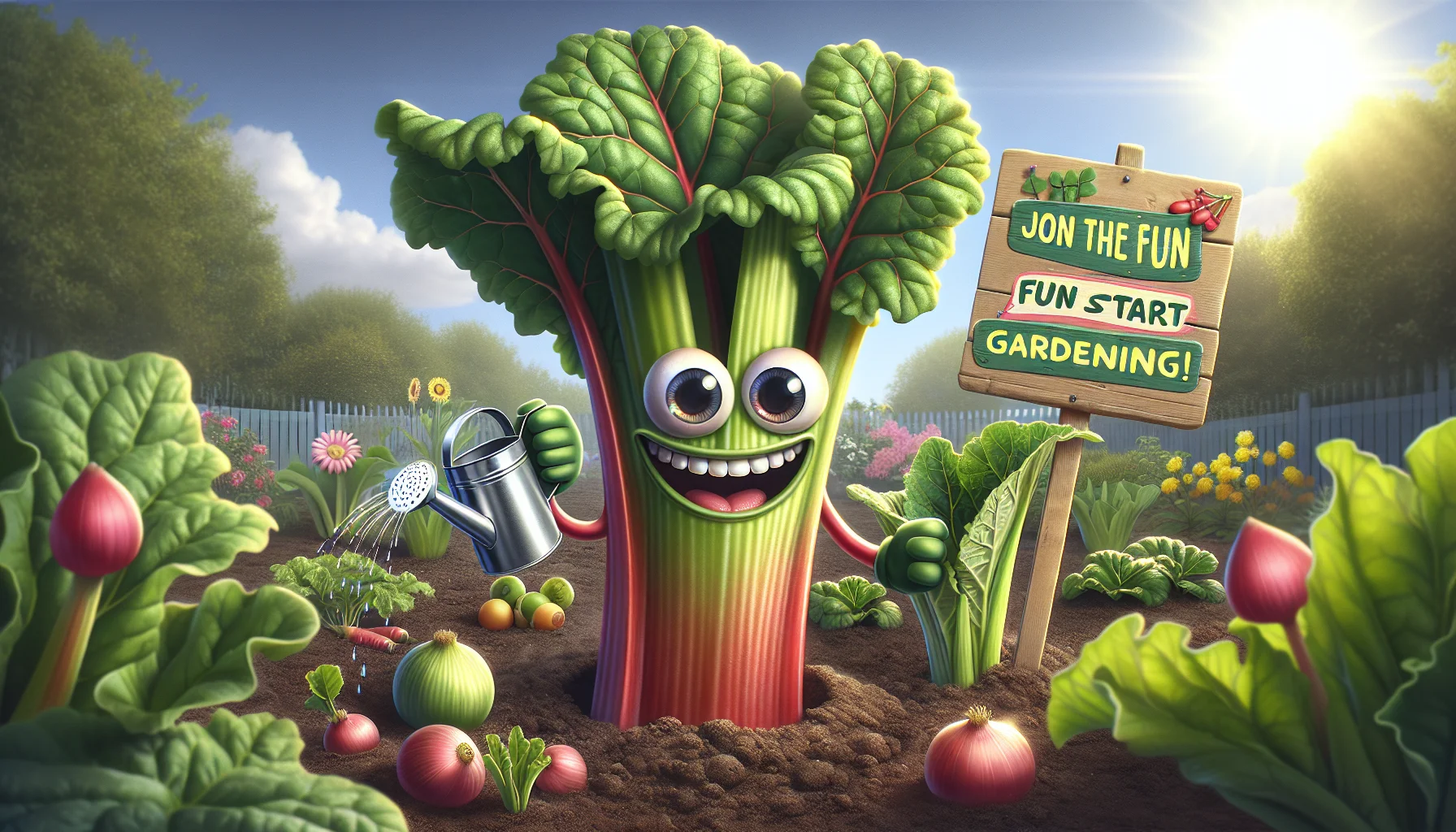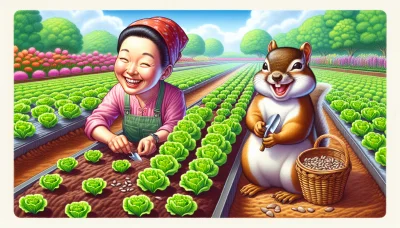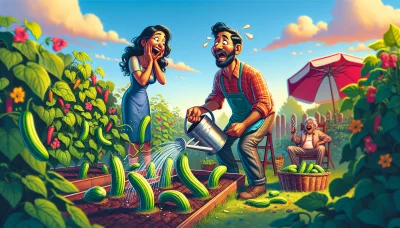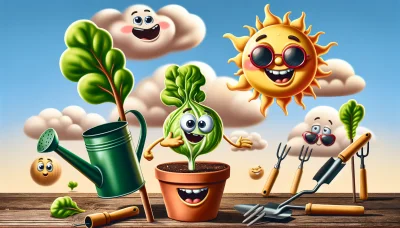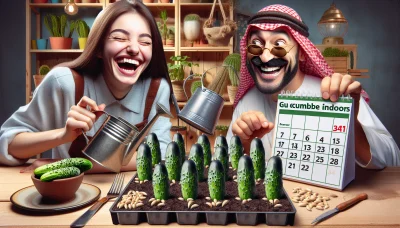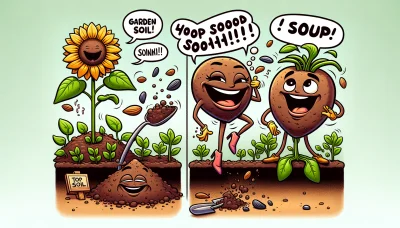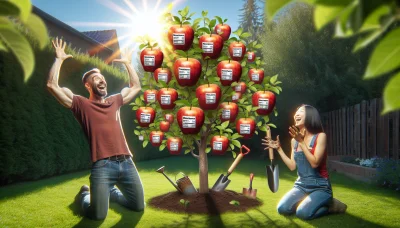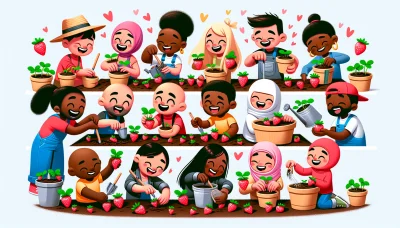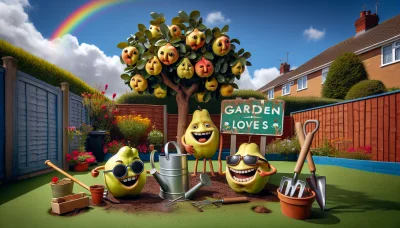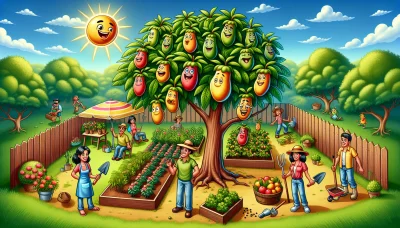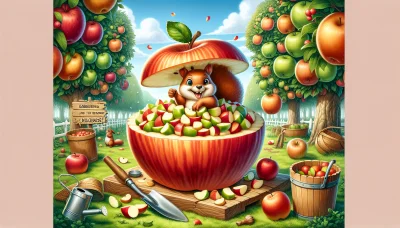Rheum rhabarbarum Quiz
Test Your Knowledge
Question of
Introduction to Rheum Rhabarbarum
Rheum rhabarbarum, commonly known as rhubarb, is a species of plant in the family Polygonaceae. It is known for its large leaves and fleshy, edible stalks, which are often used in cooking and baking. The stalks have a tart flavor, making them popular for use in pies, jams, and desserts. Rhubarb is a perennial plant, which means it can live for several years, and it thrives in cooler climates. It's important to note that while the stalks are edible, the leaves of the rhubarb plant are toxic and should not be consumed.
The History of Rheum Rhabarbarum
Rheum rhabarbarum, commonly known as rhubarb, has a rich history that dates back thousands of years. Its origins can be traced to the wilds of the Himalayas in Asia, where it was initially cultivated for medicinal purposes. Rhubarb was highly valued in ancient China for its purgative qualities and was one of the first Chinese medicines to be introduced to the West. By the 14th century, it had made its way along the Silk Road to Europe and was being used for both medicinal and culinary purposes. The plant was introduced to North America in the late 18th century, where it became popular in pies and desserts, earning it the nickname "pie plant." Over the centuries, rhubarb has been appreciated not only for its unique flavor but also for its potential health benefits, including digestive aid and anti-inflammatory properties.
How to Plant and Grow Rheum Rhabarbarum
- Choose a sunny spot with well-draining soil.
- Ensure the soil pH is between 6.0 and 6.8 for optimal growth.
- Incorporate plenty of organic matter into the planting area to enrich the soil.
- Space crowns or seedlings about 3 to 4 feet apart to give plants room to spread.
- Plant the crowns or seedlings so that the top of the root is just below the soil surface, approximately 1 to 2 inches deep.
- Water thoroughly after planting to settle the soil around the roots.
- Mulch around the plants to retain moisture and suppress weeds.
- Keep the soil consistently moist but not waterlogged throughout the growing season.
- Apply a balanced fertilizer in early spring and again when the plants are actively growing.
- Harvest rhubarb stalks by twisting and pulling them from the plant when they are about 12 to 18 inches long. Do not harvest all stalks from one plant in a single year to ensure the plant remains healthy and productive.
Caring for Your Rheum Rhabarbarum
Rheum rhabarbarum, commonly known as rhubarb, is a perennial vegetable that is valued for its tart, edible stalks. To ensure a healthy and productive rhubarb plant, proper care is essential. Firstly, watering is key, especially during dry periods. Rhubarb plants require consistent moisture, so aim to keep the soil evenly moist but not waterlogged. During the growing season, a deep watering once a week is usually sufficient, but you may need to adjust based on rainfall and soil conditions.
Fertilizing is another important aspect of rhubarb care. In early spring, before the plant begins to grow actively, apply a balanced, all-purpose fertilizer around the base of the plant. This will help to kickstart growth. Additionally, a light application of compost or well-rotted manure can provide a slow-release source of nutrients throughout the growing season.
Pruning is also necessary for rhubarb plants, mainly to remove any flower stalks that appear. Flowering can reduce the vigor of the plant and the quality of the stalks. Therefore, it's best to cut any flower stalks as soon as they're noticed, directing the plant's energy back into producing healthy stalks. At the end of the growing season, remove any old or damaged leaves to keep the plant tidy and reduce the risk of disease.
Common Pests and Diseases Affecting Rheum Rhabarbarum
- Crown Rot : Caused by various soil-borne pathogens, leading to the decay of the crown and root system. Management includes ensuring good drainage and avoiding over-watering.
- Rhubarb Curculio : A large snout beetle that punctures stalks to lay eggs, causing damage. Management involves removing and destroying infested stalks and practicing good weed control.
- Leaf Spot : Fungal diseases that cause spots on leaves which can lead to defoliation. Management includes using fungicides and removing affected leaves to reduce the spread.
- Root Weevils : These pests feed on the roots, leading to weakened plants. Management can include using beneficial nematodes or diatomaceous earth around the base of plants.
- Slugs and Snails : They feed on the leaves, creating holes. Management includes using slug and snail baits or barriers like copper tape around the plants.
Harvesting and Using Rheum Rhabarbarum
Rheum rhabarbarum, commonly known as rhubarb, is a perennial plant that is harvested primarily for its tart, flavorful stalks. The best time to harvest rhubarb is from late spring through early summer, when the stalks are 12 to 18 inches long and have a deep red or pink color, though some varieties may remain green. It's important to harvest only the stalks, as the leaves of the plant are toxic and should never be consumed. To harvest, grab the base of the stalk and twist it off the plant or cut it at the base with a sharp knife. Be sure to leave at least two stalks on the plant to ensure it continues to grow and produce the following year. After harvesting, remove the leaves and discard them. The stalks can be stored in the refrigerator for up to two weeks if they are wrapped in plastic or placed in an airtight container. For longer storage, rhubarb can be easily frozen. Cut the stalks into bite-sized pieces, blanch them in boiling water for about 1 minute, then cool quickly in ice water. Drain the pieces and freeze them on a baking sheet before transferring to a freezer bag or container. Rhubarb is versatile in the kitchen and can be used in a variety of culinary applications. Its tartness makes it perfect for sweet dishes like pies, crumbles, and jams, often paired with strawberries or other sweet fruits to balance its sourness. Rhubarb can also be used in savory dishes, such as sauces and chutneys that accompany meats, adding a unique flavor profile to your meals. When cooking with rhubarb, it's typically necessary to sweeten it with sugar, honey, or another sweetener to mitigate its tartness.
FAQs About Rheum Rhabarbarum
| Question | Answer |
|---|---|
| What is Rheum rhabarbarum? | Rheum rhabarbarum, commonly known as rhubarb, is a perennial plant known for its edible stalks which are often used in pies and desserts. |
| Is the whole plant edible? | No, only the stalks of the rhubarb plant are edible. The leaves are toxic and should not be consumed. |
| How do I plant Rheum rhabarbarum? | Plant rhubarb in well-drained, fertile soil in a sunny or lightly shaded spot. It is best to plant the crowns in early spring. |
| How often should I water my rhubarb plant? | Rhubarb plants require consistent moisture, especially during the summer. Water the plants thoroughly, once a week, more during hot, dry periods. |
| Why are my rhubarb stalks thin and spindly? | Thin and spindly stalks can be a result of overcrowding, poor soil nutrition, or insufficient sunlight. Ensure your plant has enough space, nutrient-rich soil, and adequate sunlight. |
| Can I harvest rhubarb in its first year? | It is recommended to wait until the second year before harvesting rhubarb to allow the plant to establish itself. |
| How do I harvest rhubarb correctly? | Gently twist and pull the stalks from the base of the plant. Be sure to leave at least two to three stalks on the plant to ensure continued growth. |
| What are some common problems with growing rhubarb? | Common problems include crown rot, which is caused by poor drainage, and pests such as rhubarb weevils. Ensure good soil drainage and inspect plants regularly for pests. |
